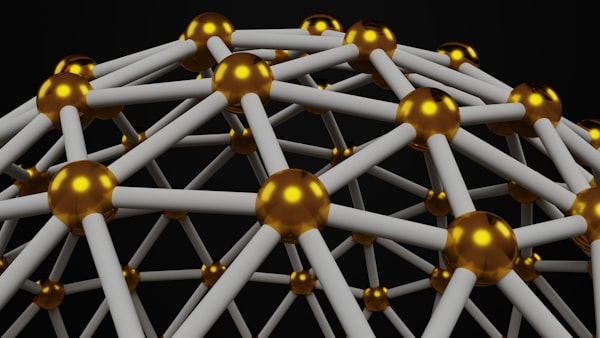Accelerating MongoDB Backup with MinIO Jumbo

Make MongoDB backups faster - upload in parallel with MinIO Jumbo.
Read more
Make MongoDB backups faster - upload in parallel with MinIO Jumbo.
Read more
The Oracle Secure Backup (OSB) cloud module allows you to back up your Oracle Database to a MinIO bucket. It leverages RMAN’s encryption to ensure the security of the database backup.
Read more
When we started MinIO, we set out to set a new standard for object storage. We built a software-defined, S3 API compatible object storage that is the fastest and most scalable solution available that isn’t S3. But we didn’t stop there. We are also crafting an entirely different experience through our SUBNET experience. SUBNET combines a commercial license
Read more
Introduction Open Table Formats (OTFs) are a phenomenon in the data analytics world that has been gaining momentum recently. The promise of OTFs is as a solution that leverages distributed computing and distributed object stores to provide capabilities that exceed what is possible with a Data Warehouse. The open aspect of these formats gives organizations options when it comes to
Read more
Globally there has been a shift to bring applications closer to home. Enterprises want more control of their data and have had enough of paying egress fees to the public cloud to get access to their own data. Besides cost, there is also the matter of security, or lack thereof, when resources are shared with unknown organizations. Vulnerabilities can trickle
Read more
We were recently asked by a journalist to help frame the challenges and complexity of the hybrid cloud for technology leaders. While we suspect many technologists have given this a fair amount of thought, we also know from first-hand discussions with customers and community members that this is still an area of significant inquiry. We wanted to summarize that thinking
Read more
Driving competitive advantage by employing the best technologies separates great operators from good operators. Discovering the hidden gems in your corporate data and then presenting key actionable insights to your clients will help create an indispensable service for your clients, and isn’t this what every executive wishes to create? Cloud-based data storage (led by the likes of Amazon S3,
Read moreIntroduction It’s challenging to keep track of machine learning experiments. Let’s say you have a collection of raw files in a MinIO bucket to be used to train and test a model. There will always be multiple ways to preprocess the data, engineer features, and design the model. Given all these options, you will want to run many
Read more
Introduction The California Gold Rush started in 1848 and lasted until 1855. It is estimated that approximately 300,000 people migrated to California from other parts of the United States and abroad. Economic estimates suggest that, on average, only half made a modest profit. The other half either lost money or broke even. Very few gold seekers made a significant
Read more
Between the public cloud and your data center exists a middle ground where you can have full control over infrastructure hardware, without the high initial cost of investment.
Read more
If S3 costs are burning a hole in your pocket, then it's time to start thinking about running MinIO on-premise for your private cloud.
Read more
MinIO has partners across the ecosystem - from our cloud partnerships with AWS, GCP, Azure and IBM to more solution-focused partnerships like Snowflake and Dremio. We are pleased to add UCE Systems to our roster of solutions-based partnerships. UCE is a leading consulting firm focused on modern data platforms (like the aforementioned Dremio). UCE has brought dozens of enterprises out
Read more
Introduction This post was written in collaboration with Iddo Avneri from lakeFS. Managing the growing complexity of ML models and the ever-increasing volume of data has become a daunting challenge for ML practitioners. Efficient data management and data version control are now critical aspects of successful ML workflows. In this blog post, we delve into the power of parallel ML
Read more
When we announced the availability of MinIO on Red Hat OpenShift, we didn’t anticipate that demand would be so great that we would someday write a series of blog posts about this powerful combination. This combination is being rapidly adopted due to the ubiquitous nature of on-prem cloud and the need of large organizations wanting to bring their data
Read more
About MLflow MLflow is an open-source platform designed to manage the complete machine learning lifecycle. Databricks created it as an internal project to address challenges faced in their own machine learning development and deployment processes. MLflow was later released as an open-source project in June 2018. As a tool for managing the complete lifecycle, MLflow contains the following components. * MLflow
Read more
MinIO Jumbo improved backup performance by 15x using parallel uploads.
Read more
MinIO has developed into a core building block for the media and entertainment industry. With a customer roster that includes the leading cable company, the biggest streaming company and dozens of companies up and down the stack we have added a number of different features in recent quarters. One of those is called the fan out feature and it is
Read more
Making the serving of your AI models more lightweight by leveraging the simplicity of MinIO’s object store. tl;dr MinIO object storage can be used as a ‘single source of truth’ for your machine learning models and, in turn, make serving with PyTorch Serve more efficient when managing changes to Large Language Models (LLMs). As always, sample code is
Read more
MinIO is built with speed and resiliency at the forefront, regardless of the type of environment you choose to run it on. Whether it's multi cloud, bare metal, cloud instances or even on-premise, MinIO is designed to run on AWS, GCP, Azure, colocated bare metal servers and Kubernetes distributions such as Red Hat OpenShift. MinIO runs just as
Read more
Learn how to troubleshoot object storage performance with low level system component testing.
Read more